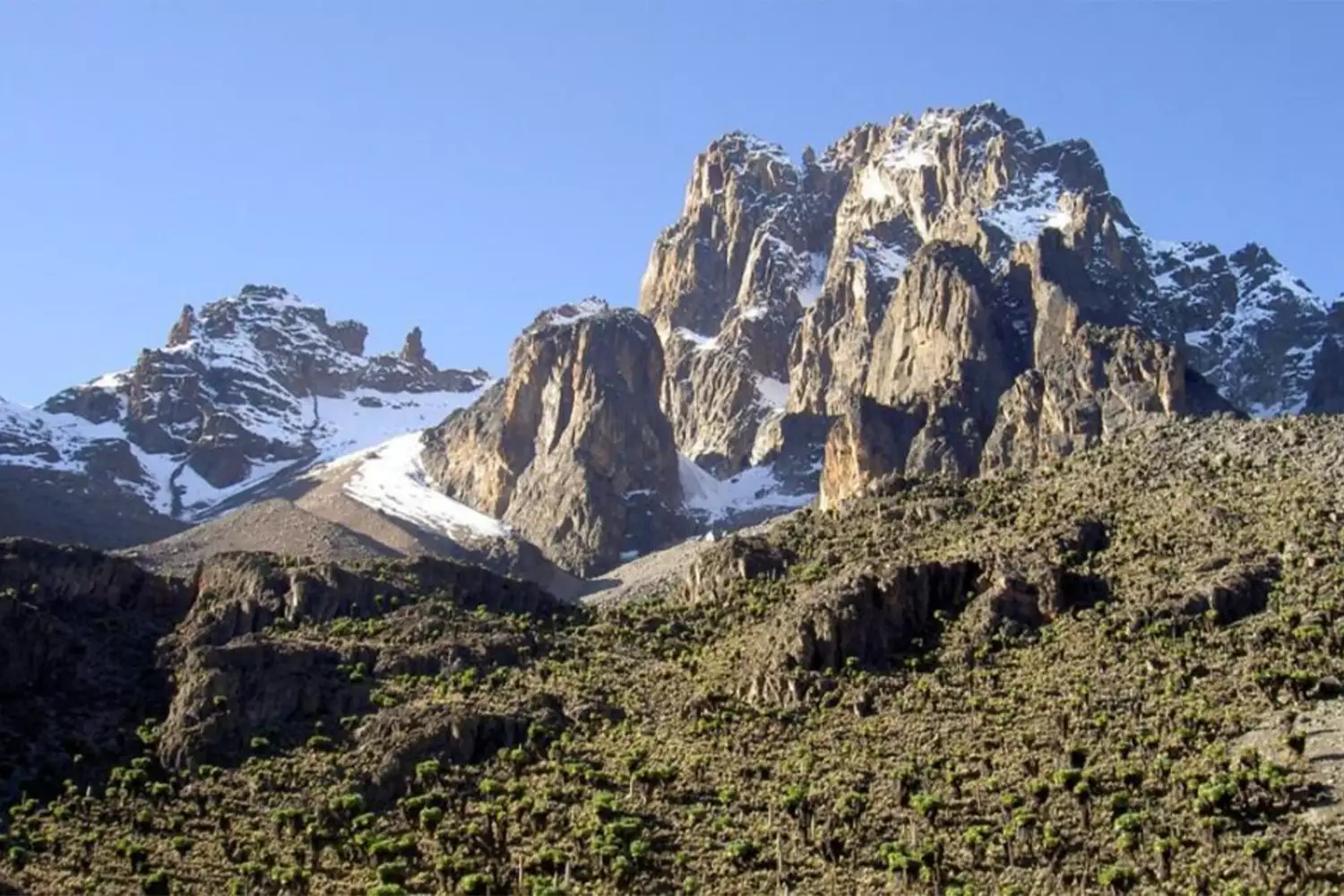
3-Day Mount Kenya Trekking Tour
A beginner-friendly trek via Sirimon route with camping…
Mount Kenya National Park, spanning 715 square kilometers in Kirinyaga and Meru Counties, surrounds Africa’s second-highest mountain, Mount Kenya, peaking at 5,199m. Established in 1949 and designated a UNESCO World Heritage Site in 1997, it draws around 16,000 climbers annually, per *Kenya Wildlife Service*. Famous for its dramatic alpine scenery—featuring glaciers, tarns, and peaks like Batian and Nelion—the park boasts diverse ecosystems, from bamboo forests to moorlands. It hosts 20 mammal species, including elephants and black rhinos, and over 130 bird species. Located 175 km northeast of Nairobi (3.5-hour drive), its challenging routes, like Sirimon and Naromoru, make it a premier destination for mountain climbing and trekking.
For 2025-2026, Mount Kenya climbing and trekking tours range from $300 to $1200 per person per day, depending on route, duration, and accommodation. Budget treks with campsites cost $300-$500 per day, while mid-range options with mountain huts like Shipton’s Camp range from $500-$800. Luxury tours, including stays at Serena Mountain Lodge, cost $800-$1200 per day. Prices cover guides, porters, park fees ($52/day), meals, and equipment, with group discounts available.
Book "The Best Mount Kenya National Park Tour" via email at jaynevytours@gmail.com or WhatsApp at +255 678 992 599.
View the map below to explore Mount Kenya’s climbing routes, key peaks, and campsites.

Accommodations range from rustic to luxurious. Mountain huts like Shipton’s Camp and Austrian Hut, used during climbs, cost $20-$50 per night and are included in tour packages. Budget campsites, such as Old Moses Camp, range from $10-$30 per night. Mid-range and luxury options outside the park, like Serena Mountain Lodge or Fairmont Mount Kenya Safari Club, offer comfort at $200-$600 per night, located within 30-60 minutes of park gates. Most climbers use huts or campsites for summit attempts, with hotels ideal for pre- or post-climb relaxation.
Climb to Point Lenana (4,985m), the highest trekking peak, via routes like Sirimon or Naromoru. Tours, lasting 4-7 days and costing $1000-$3000 per person, include guides, porters, and gear, offering stunning views of glaciers and alpine lakes.
Trekking routes like Chogoria, with its scenic Gorges Valley, offer 3-5 day hikes through forests and moorlands. Priced at $600-$1500 per person, these guided treks suit beginners and include camping and wildlife spotting.
Camp at sites like Old Moses or Liki North, included in climbing packages or costing $10-$20 per night separately. Camping offers an immersive experience amidst alpine flora, with guided setups ensuring safety.
Spot elephants, buffalo, and colobus monkeys in the lower forests. Guided wildlife walks, costing $30-$60 for 2-3 hours, explore the park’s biodiversity, often combined with shorter treks.
With over 130 bird species, including the Hartlaub’s turaco, the park is a birding haven. Guided bird watching tours, priced at $40-$80 for 2-3 hours, focus on montane forests and wetlands.
Mount Kenya National Park is famous for hosting Kenya’s highest peak at 5,199m and its stunning alpine scenery with glaciers and tarns.
Entrance fees for 2025-2026 are approximately $52 per person per day for non-residents, payable via eCitizen.
The park is in Kirinyaga and Meru Counties, about 175 km northeast of Nairobi, a 3.5-hour drive.
Options include mountain huts like Shipton’s Camp, hotels like Serena Mountain Lodge, and budget campsites like Old Moses.
Activities include mountain climbing, trekking, camping, wildlife viewing, and bird watching.
Costs range from $300-$1200 per person per day, depending on route, duration, and accommodation type.
Yes, routes like Sirimon are beginner-friendly for trekking, though summit climbs require fitness and experience.
The dry seasons, January to February and July to October, offer the best conditions for climbing and trekking.
Yes, guides are mandatory for safety and navigation, included in all tour packages.
Popular routes include Sirimon, Naromoru, Chogoria, and Timau, each offering unique scenery and challenges.
Pack warm clothing, waterproof gear, trekking boots, a sleeping bag, sunglasses, and high-altitude medication.
Yes, lower slopes host elephants, rhinos, and monkeys, viewable during guided walks or treks.